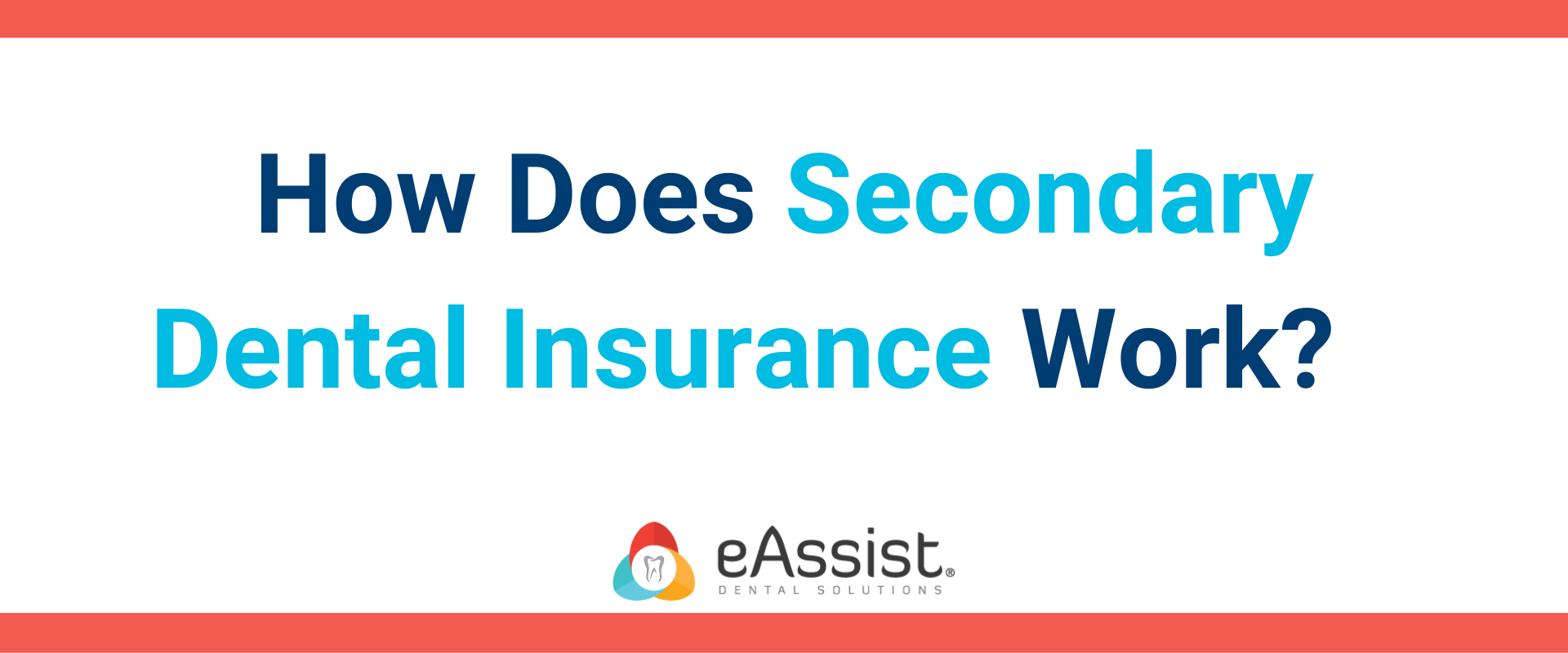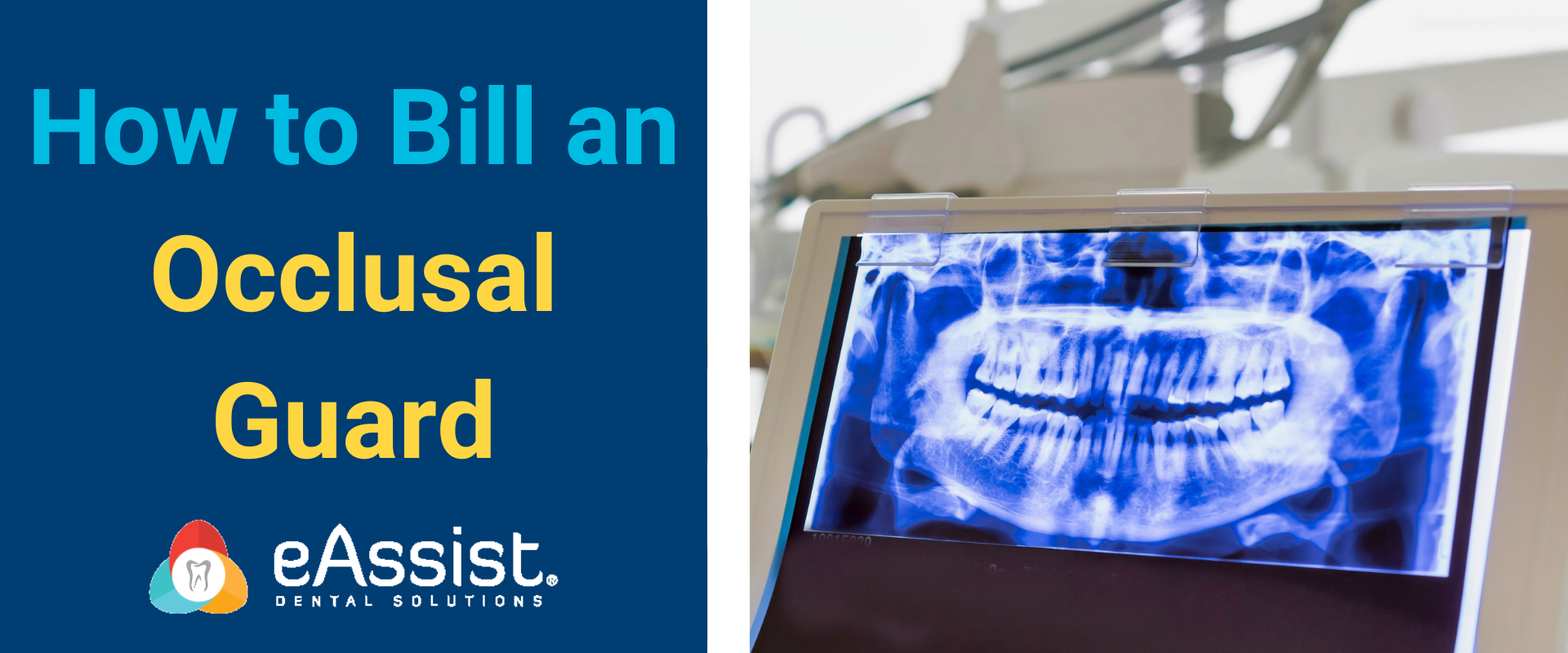When billing dental insurance claims there are so many rules and regulations that things can get confusing. Especially when there are two carriers involved. When a patient has two insurance plans, it can sometimes be unclear how the second plan functions. In the following, we will provide an answer to the common question, “How does secondary dental insurance work?”
What is secondary dental insurance?
A patient can be covered by more than one dental insurance plan. When this occurs, one plan will be primary and one plan will be secondary. The primary plan will be billed first and then the secondary insurance. The primary plan should cover the majority of the claim and the secondary will pay a supplemental amount.
Keep in mind that a patient is not limited to just two insurance plans. Several patients have three plans and some even have four. This can be especially common with patients who are children. If each parent has their own primary and secondary plan, the child could potentially be covered under all four plans. These additional plans are considered third coverage and fourth coverage, but they function the same way secondary dental insurance does.
How do I know which plan is primary and which is secondary?
Determining which plan is primary and which is secondary depends on different situations. Additionally, it varies when the individual is an adult or a child.
For adult patients here are some methods to determine primary and secondary coverage:
- The patient is the subscriber on both plans – the plan with the earliest effective date is primary
- The patient is the subscriber on one plan and dependent on the other – the plan in which they’re a subscriber is primary and the plan in which they’re a dependent is secondary
- The patient is a federal employee – the patient’s federal medical plan is primary and their federal dental plan is secondary. This also applies to spouses of federal employees who don’t have their own coverage.
- The patient is the spouse of a federal employee and has their own dental coverage – the patient’s plan is primary, the spouse’s federal medical plan is secondary and the spouse’s federal dental plan is a third coverage
- The patient’s treatment is covered under their medical plan – the medical plan is primary and the dental plan is secondary.
For child patients here are some methods to determine primary and secondary coverage:
- The patient lives in a two-parent household – the “birthday rule” applies, the plan in which the parent has the earliest birthday month is primary (if both birthdays are in the same month it’s the earlier day)
- The patient’s parents live apart – the plan of the parent the child lives with is primary unless there is a court order stating the other parent needs to provide coverage
- The patient lives with a parent and a step-parent – the plan of the biological parent the patient lives with is primary, the plan of the biological parent the patient doesn’t live with is secondary and the step-parent’s coverage is third, unless there is a court order stating otherwise
Although these are the basic scenarios for child patients there are a lot of circumstances that can change this, especially when a court order is involved. When you have a child patient with confusing parental circumstances, it’s best to ask the parent some questions (such as, “Which child does the patient reside with?” and “Is there a court order assigning insurance coverage?”) to determine the correct primary and secondary coverage.

When do I bill the secondary insurance?
Secondary insurance should only be billed after the primary EOB (explanation of benefits) is received. In most circumstances, secondary plans will only issue payment once they receive the primary EOB. There are exceptions to this. For instance, if the patient is a federal employee, most federal dental plans will automatically coordinate benefits without the primary EOB. Also, if you are nearing the timely filing limit with the secondary insurance and haven’t received the primary EOB, it’s important to bill them the secondary insurance so that the claim is on file and the filing deadline isn’t missed.
What is non-duplication of benefits?
Some dental plans include a non-duplication of benefits provision. This means that when they are the secondary plan, they will pay no more benefits than they would have as the primary coverage. Typically, when insurance plans coordinate benefits, the secondary plan will pay any amount of coverage the primary didn’t. For example, if the treatment was covered at 80% by the primary, the secondary insurance will pay the remaining 20%. When a non-duplication of benefits clause applies, the secondary insurance may not end up paying anything. Below are some examples of how the non-duplication of benefits clause works.
Secondary plan without non-duplication of benefits provision. Both plans cover treatment at 80%:
- Primary pays 80%
- Secondary pays remaining 20%
Secondary plan with non-duplication of benefits provision. Both plans cover treatment at 80%.
- Primary pays 80%
- Secondary pays 0%
Secondary plan with non-duplication of benefits clause. The primary plan covers treatment at 50%. The secondary plan covers treatment at 80%.
- Primary pays 50%
- Secondary pays 30%
Secondary plan with non-duplication of benefits provision. The primary plan covers treatment at 80%. The secondary plan covers treatment at 50%.
- Primary pays 80%
- Secondary pays 0%
With or without non-duplication of benefits provisions, secondary dental insurance coverage can bring complexity to the dental billing process. That’s why “How does secondary dental insurance work?” is such a common question. As many patients do have secondary coverage, it’s important to learn how to navigate its complexity to successfully bill dental claims. If you are struggling with its complexity consider partnering with eAssist. Our experienced Success Consultants are familiar with secondary coverage and will ensure your claims are paid quickly and correctly. To learn more, schedule a consultation with us.









0 Comments